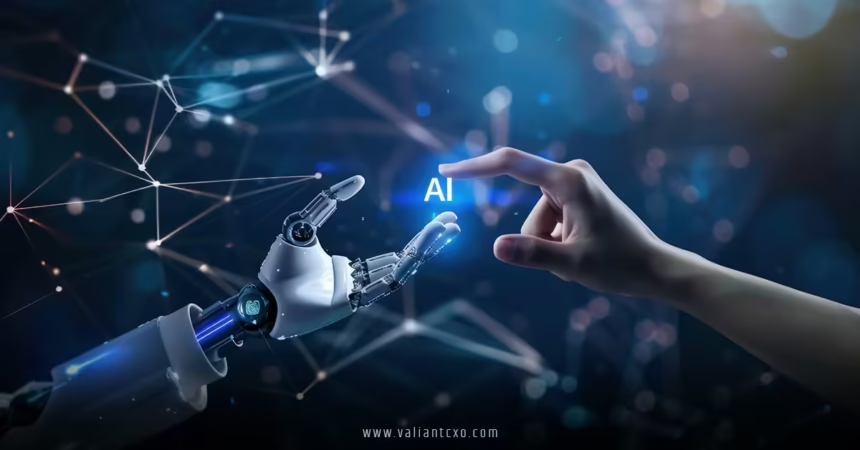AI Task Automation is transforming the way we work, live, and innovate. Imagine a world where repetitive tasks vanish, leaving you free to focus on creativity and strategy. That’s the promise of AI task automation—a technology that’s not just a buzzword but a game-changer for businesses and individuals alike. In this article, we’ll dive deep into what AI task automation is, how it works, its benefits, challenges, and real-world applications. Whether you’re a business owner, a tech enthusiast, or just curious, this guide will walk you through the exciting world of AI task automation in a way that’s easy to grasp and impossible to ignore.
What Is AI Task Automation?
So, what exactly is AI task automation? At its core, it’s the use of artificial intelligence to perform repetitive, rule-based tasks with minimal human intervention. Think of it like a super-smart assistant who never gets tired, doesn’t need coffee breaks, and can handle everything from scheduling emails to analyzing massive datasets in seconds. Unlike traditional automation, which relies on rigid scripts, AI task automation leverages machine learning, natural language processing, and predictive analytics to adapt, learn, and improve over time.
For example, picture a factory where robots assemble cars. That’s basic automation. Now, imagine those robots learning to spot defects, adjust their movements, and optimize production without human input. That’s AI task automation—automation with a brain. It’s about making processes smarter, not just faster.
The Core Components of AI Task Automation
To understand AI task automation, let’s break it down into its key components:
- Machine Learning (ML): Algorithms that learn from data to make decisions or predictions. For instance, ML can help an AI tool predict customer behavior based on past purchases.
- Natural Language Processing (NLP): This enables AI to understand and generate human language, like chatbots answering customer queries.
- Robotic Process Automation (RPA): Software bots that mimic human actions, such as filling out forms or extracting data from documents.
- Computer Vision: AI that “sees” and interprets visual data, like scanning invoices or identifying objects in images.
Together, these technologies make AI task automation a powerhouse for streamlining workflows across industries.
Why Is AI Task Automation a Big Deal?
Why should you care about AI task automation? Because it’s reshaping how we approach work. Businesses are under pressure to do more with less—less time, fewer resources, and tighter budgets. AI task automation steps in as a superhero, saving the day by boosting efficiency, cutting costs, and reducing errors. Here’s why it’s a big deal:
1. Skyrocketing Productivity
With AI task automation, tasks that once took hours can be done in minutes. For example, an AI-powered tool can process thousands of customer support tickets, categorizing them and drafting responses faster than any human could. This frees up employees to focus on high-value tasks like brainstorming new products or building client relationships.
2. Cost Savings That Add Up
Let’s be real—time is money. By automating repetitive tasks, businesses can save on labor costs and reduce human error. A study by McKinsey found that up to 30% of current jobs could be automated, leading to significant savings. For small businesses, AI task automation means doing more without hiring an army of staff.
3. Enhanced Accuracy
Humans make mistakes. AI? Not so much. Whether it’s crunching numbers or sorting data, AI task automation ensures pinpoint accuracy. Take accounting, for instance. AI tools can reconcile invoices, flag discrepancies, and even detect fraud with precision that humans might miss after a long day.
4. Scalability for Growth
As businesses grow, so do their workloads. AI task automation scales effortlessly, handling increased volumes without breaking a sweat. Whether you’re a startup or a global enterprise, AI can adapt to your needs, making it a flexible solution for growth.
How Does AI Task Automation Work?
Curious about the magic behind AI task automation? It’s less about wizardry and more about clever tech working together. Here’s a simplified look at how it functions:
- Data Input: AI systems need data to work—think emails, spreadsheets, images, or customer queries.
- Processing and Analysis: Using ML and NLP, the AI analyzes the data, identifies patterns, and makes decisions. For example, an AI tool might read an email and decide whether it’s a complaint or a sales inquiry.
- Action Execution: The AI performs the task, like sending a reply, updating a database, or generating a report.
- Learning and Improvement: The system learns from each task, refining its performance over time. This is where AI task automation shines—it gets smarter with every action.
For instance, an e-commerce business might use AI task automation to manage inventory. The AI tracks stock levels, predicts demand based on past sales, and automatically reorders products when supplies run low. It’s like having a crystal ball and a personal assistant rolled into one.
Real-World Applications of AI Task Automation
AI task automation isn’t just a futuristic dream—it’s happening now, across industries. Let’s explore some exciting ways it’s being used:
1. Customer Service Revolution
Ever chatted with a bot that felt almost human? That’s AI task automation at work. AI-powered chatbots handle customer inquiries 24/7, from answering FAQs to resolving complaints. Companies like Zendesk use AI to automate ticketing systems, ensuring customers get quick responses while support teams focus on complex issues.
2. Streamlined HR Processes
Hiring is a time-suck, right? AI task automation makes it easier by screening resumes, scheduling interviews, and even onboarding new hires. AI tools can analyze candidate profiles, match skills to job requirements, and send personalized follow-ups, saving HR teams hours of work.
3. Marketing That Hits the Mark
Marketers love AI task automation for its ability to personalize at scale. AI can segment audiences, create tailored email campaigns, and analyze performance metrics in real time. For example, tools like HubSpot use AI to automate content recommendations, ensuring the right message reaches the right person at the right time.
4. Financial Efficiency
In finance, AI task automation is a lifesaver. It handles everything from expense tracking to fraud detection. AI tools can process transactions, generate financial reports, and even predict market trends, giving businesses a competitive edge.
5. Healthcare Transformation
In healthcare, AI task automation is saving lives. AI systems analyze medical records, schedule appointments, and even assist in diagnostics. For instance, AI can scan X-rays for abnormalities faster than a human, allowing doctors to focus on patient care.
Challenges of AI Task Automation
Let’s keep it real—AI task automation isn’t perfect. While it’s a powerful tool, there are hurdles to overcome:
1. High Initial Costs
Setting up AI task automation can be pricey. From software licenses to integration costs, businesses need to invest upfront. However, the long-term savings often outweigh the initial hit.
2. Learning Curve
AI systems require training and fine-tuning. Employees may need time to learn how to use these tools effectively, which can slow things down at first.
3. Ethical Concerns
Can AI be trusted with sensitive tasks? AI task automation raises questions about data privacy, job displacement, and bias in algorithms. For example, if an AI is trained on biased data, it might make unfair decisions, like rejecting qualified job candidates.
4. Integration Challenges
Not all systems play nice with AI. Integrating AI task automation with legacy software can be a headache, requiring custom solutions or upgrades.
How to Implement AI Task Automation in Your Business
Ready to jump on the AI task automation bandwagon? Here’s a step-by-step guide to get started:
Step 1: Identify Repetitive Tasks
Look for tasks that eat up time but don’t require human creativity. Data entry, scheduling, and customer support are prime candidates for AI task automation.
Step 2: Choose the Right Tools
There are tons of AI tools out there, from UiPath for RPA to Google’s AI platforms for analytics. Pick tools that align with your needs and budget.
Step 3: Start Small
Don’t try to automate everything at once. Start with one process, like automating email responses, and scale up as you gain confidence.
Step 4: Train Your Team
Invest in training to ensure your team knows how to use AI task automation tools. A well-trained team is key to maximizing ROI.
Step 5: Monitor and Optimize
AI isn’t a set-it-and-forget-it solution. Monitor performance, gather feedback, and tweak the system to keep it running smoothly.
The Future of AI Task Automation
What’s next for AI task automation? The future is bright—and a little mind-blowing. As AI technology evolves, we’ll see even smarter systems that can handle complex tasks like strategic planning or creative content creation. Imagine an AI that not only schedules your meetings but also suggests agenda items based on your goals. Or an AI that writes a blog post (like this one!) tailored to your audience.
The rise of AI task automation will also spark new job opportunities. While some roles may shift, new ones will emerge in AI development, oversight, and ethics. The key is to embrace AI as a partner, not a replacement.
Conclusion
AI task automation is more than a trend—it’s a revolution that’s reshaping how we work. By automating repetitive tasks, boosting productivity, and reducing errors, AI is empowering businesses and individuals to focus on what truly matters: innovation, creativity, and growth. Whether you’re a small business owner or a corporate leader, AI task automation offers tools to streamline your workflows and stay ahead of the curve. So, why wait? Start exploring AI task automation today and unlock a world of possibilities. The future is automated, and it’s exciting!
FAQs
1. What is AI task automation, and how does it differ from traditional automation?
AI task automation uses artificial intelligence to perform repetitive tasks with learning capabilities, unlike traditional automation, which follows fixed rules. AI adapts and improves over time, making it ideal for dynamic workflows.
2. Can small businesses benefit from AI task automation?
Absolutely! AI task automation helps small businesses save time and money by automating tasks like customer support, invoicing, and marketing, allowing them to compete with larger companies.
3. Are there risks associated with AI task automation?
Yes, risks include high setup costs, data privacy concerns, and potential job displacement. However, with proper planning, AI task automation can be implemented ethically and effectively.
4. What industries are using AI task automation the most?
Industries like healthcare, finance, marketing, and customer service are leading the charge in adopting AI task automation for tasks like diagnostics, fraud detection, and personalized campaigns.
5. How can I start using AI task automation in my business?
Start by identifying repetitive tasks, choosing AI tools that fit your needs, and training your team. Begin small, monitor results, and scale up to maximize the benefits of AI task automation.
Click Here:valiantcxo.com


